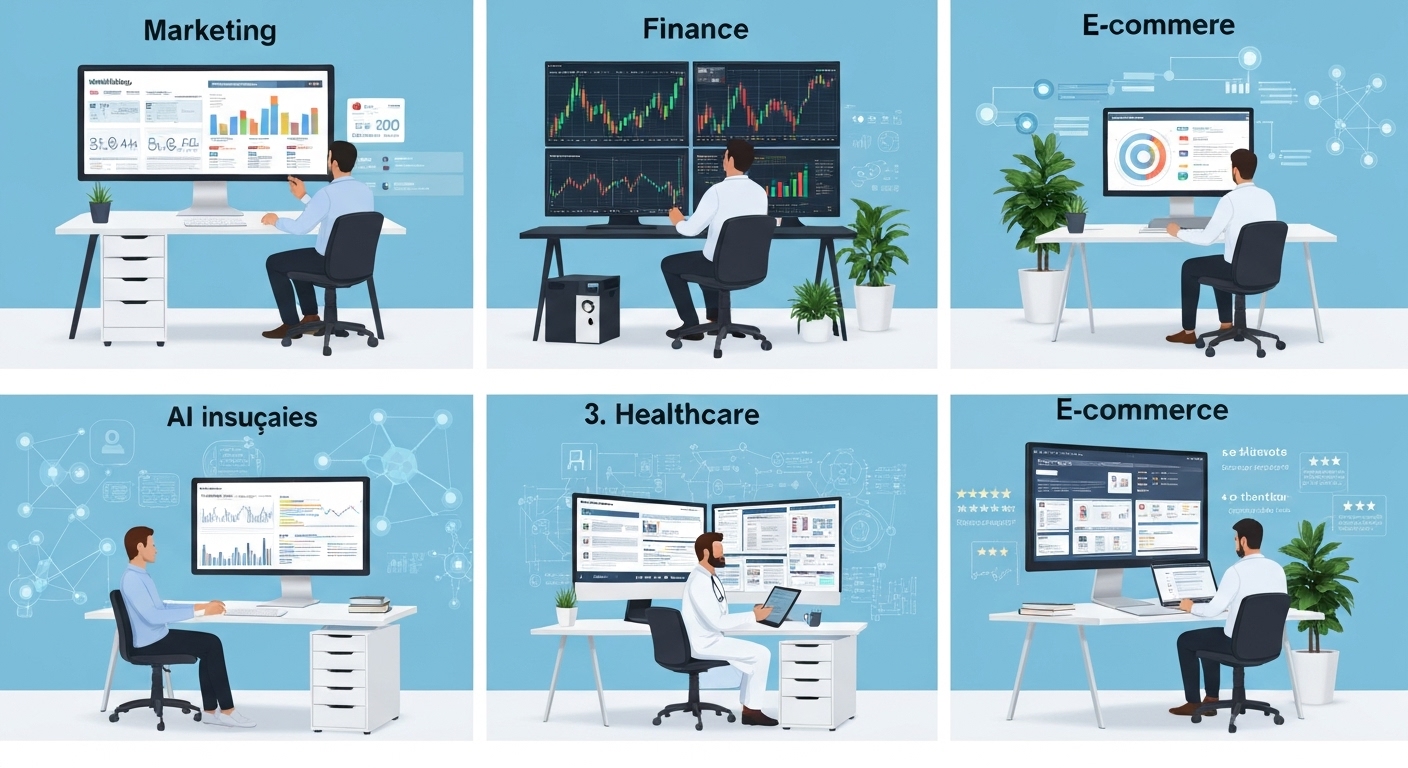AI for Real – Time Data Analysis : Unleashing the Power of Instant Insights
AI for real-time data analysis is revolutionizing how businesses operate, enabling them to make faster, more informed decisions based on up-to-the-minute insights.
The Rise of AI in Real-Time Analytics
The ability to analyze data as it arrives, rather than in batches, has become crucial in today’s fast-paced business environment. Artificial intelligence (AI) provides the tools and techniques necessary to process and interpret data streams at unprecedented speeds. This transformative approach is changing how organizations across various sectors approach data.

Benefits of Real-Time AI-Powered Data Analysis
- Faster Decision-Making: React instantly to changing market conditions.
- Improved Efficiency: Automate data processing and reduce manual effort.
- Enhanced Accuracy: Minimize errors and biases in data analysis.
- Proactive Problem Solving: Identify and address issues before they escalate.
How AI Powers Real-Time Data Processing
Machine learning (ML) algorithms are at the heart of AI for real-time data analysis. These algorithms can learn from vast amounts of data, identify patterns, and make predictions with remarkable accuracy. The application of predictive analytics is growing rapidly.

Key AI Techniques for Real-Time Analysis
- Anomaly Detection: Identify unusual patterns or outliers in data streams.
- Sentiment Analysis: Gauge customer opinions and emotions from social media feeds.
- Fraud Detection: Detect and prevent fraudulent transactions in real-time.
- Predictive Maintenance: Predict equipment failures and schedule maintenance proactively.
Applications of AI for Real-Time Data Analysis Across Industries
The impact of AI for real-time data analysis spans various industries. From finance to healthcare to manufacturing, organizations are leveraging AI to gain a competitive edge.

Use Cases in Different Sectors
- Finance: Real-time fraud detection, algorithmic trading.
- Healthcare: Patient monitoring, personalized treatment recommendations.
- Manufacturing: Predictive maintenance, quality control.
- Retail: Personalized recommendations, inventory management.
Overcoming Challenges in Implementing AI for Real-Time Data Analysis
While the potential of AI for real-time data analysis is immense, several challenges must be addressed to ensure successful implementation. Some of these challenges can be overcome with the support provided by solutions such as those found at flashs.cloud.

Addressing Key Challenges
- Data Quality: Ensure data is accurate, complete, and consistent.
- Scalability: Design systems that can handle large volumes of data.
- Latency: Minimize processing delays to achieve true real-time analysis.
- Security: Protect sensitive data from unauthorized access.
The Future of AI and Real-Time Data Analysis
The future of AI for real-time data analysis is bright. As AI technology continues to evolve, we can expect even more sophisticated and powerful applications to emerge.
Emerging Trends in Real-Time AI
- Edge computing: Processing data closer to the source to reduce latency.
- Explainable AI: Making AI decisions more transparent and understandable.
- Automated Machine Learning (AutoML): Simplifying the process of building and deploying ML models.
- Data visualization tools: For better interpretation of large data.
The synergy between AI and real-time data is rapidly changing the landscape of modern data processing. Businesses must embrace these technologies to remain competitive and unlock new opportunities. You can find a wealth of information from authoritative sources, like the National Institute of Standards and Technology (NIST), to enhance your understanding and strategy.
Best Practices for Leveraging AI in Real-Time Environments
Successfully leveraging AI for real-time data analysis requires careful planning and execution. Adhering to best practices can significantly improve the chances of success. Consider the ethical dimensions alongside the business goals of the implementation to ensure responsible and trustworthy use of AI.

Key Considerations for Success
- Define Clear Objectives: Start with a specific business problem to solve.
- Choose the Right Tools: Select AI platforms and algorithms that are suited to your needs.
- Build a Strong Data Foundation: Ensure you have access to high-quality data.
- Invest in Training: Equip your team with the skills and knowledge to use AI effectively.
- Continuously Monitor and Improve: Track the performance of your AI systems and make adjustments as needed.
Conclusion
AI for real-time data analysis is no longer a futuristic concept; it’s a present-day necessity. Organizations that embrace this technology will be better equipped to make informed decisions, improve efficiency, and gain a competitive edge in today’s data-driven world. By understanding the principles, applications, and challenges associated with AI for real-time data analysis, businesses can unlock its transformative potential and drive innovation.
HOTLINE
+84372 005 899


